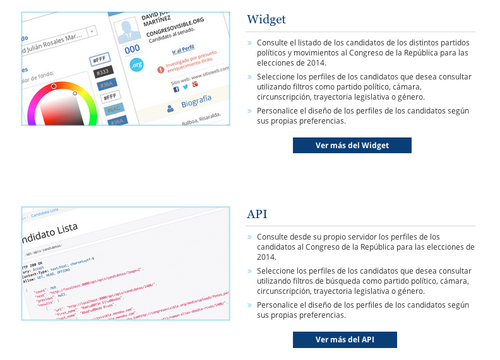Over the past few months, I’ve found myself having the same conversation with parliamentary monitoring organizations (PMOs) from countries like Slovakia, Mexico and South Korea: What are examples of civic websites that have been most successful at garnering huge traffic around legislative information—and how did they do it? The question actually addresses a more fundamental idea than just how to gain visitors to a PMO website. It goes back to how we get citizens to care about and engage in the political process, taking advantage of new technologies.
I spoke with leaders from a few of the more highly-trafficked PMOs from around the world to try and find a better answer to these questions and I’ll be posting those conversations as a three-part article over the next three days. Two things remain clear: (1) citizens do care about political information, but (2) more experimentation—whether failed or successful—is still needed to help figure out how best to translate that into effective civic engagement.
Leveraging academic and media relationships in Colombia
In the weeks leading up to the March 9 parliamentary elections in Colombia, Congreso Visible was seeing more than 120,000 visits to their webpage per day, a huge number for a civic site—or any site. This is especially true considering the relative simplicity of the platform: a traditional parliamentary monitoring website focused on providing citizens with some of the most basic information about the makeup and activities of the Colombian Congress. The organization has not only been successful in providing that information, but in getting people to seek it out.
Over the years, Congreso Visible’s key strategy has been to attempt to leverage partnerships with national and regional newspapers within Colombia and other traditional media outlets like radio stations. For example, the group’s alliance with El Espectador, a newspaper in Bogotá, allows the newspaper to include a widget developed by Congreso Visible on the webpage of every article that mentions a member of congress. Congreso Visible takes no profit from this arrangement, allowing the newspaper to use the widget to display information about representatives, including how many years they’ve been a member, how they’ve voted recently, or how many bills they’ve passed. If someone is interested in learning more, they can click the widget in order to visit Congreso Visible’s website.
According to Mateo Villamizar Chaparro, a member of Congreso Visible’s team, the organization has tried a number of approaches to disseminate parliamentary information, some more successful than others. In earlier years, Congreso Visible would release periodic bulletins to the public that included in-depth statistics on Congress and information on the discipline and voting of parties. But people had difficulty understanding the complex information presented, so the organization turned to more simple analysis of Congress’ work. This analysis is not just disseminated to the public through the website, instead Congreso Visible leverages partnerships with media organizations to author articles explaining the analysis of parliamentary data, like this article in El Nuevo Siglo, a daily published in Bogotá.
Before the recent election, the group created two new, openly available web tools, an API and a widget that present all of the information about candidates running for seats in Congress. A number of major newspapers used these tools in the lead-up to the election, and independent developers have also taken the code to build apps using the data for iOS and Android.

Congreso Visible’s API and widget are openly available on their website.
In order to expand beyond what has traditionally been a very academic audience, Congreso Visible recently updated their website, placing data like information on roll call votes onto the front page and focusing on making the page design simpler to navigate and understand. These changes have already begun to have impact on overall traffic and were especially effective during election season.
One major unique element of Congreso Visible is its connection to the University of Los Andes in Bogotá. The organization is housed within the University’s Department of Political Science, and is run by a committed group of students and professors.
Villamizar told me that working as part of a university can be a “two-edged sword.” While working as part of an academic institution helps to legitimize all of the group’s findings and make their analysis stronger—”People rely on us for good data,” Villamizar says—it can limit the ability to finance projects. However, it does provide a built-in academic interest and audience for the site, not to mention a key source of labor in students. It also helps to ensure that analysis of parliamentary information remains neutral, not politically slanted.
The group’s analysis and contribution remains grounded in the data they collect, and they remain committed to finding new ways to make it relevant to citizens’ everyday lives. And Congreso Visible continues to work to do just thatas Colombia approaches its presidential election in May. Earlier this month, the group hosted a presidential debate, again in partnership with El Espectador, with two of the major presidential candidates. Questions for the candidates were received online via Twitter while the debate was live streamed direct from the University.